Tools and materials
Here's what you'll need:
Step 1: Stain & varnish
Since cigar boxes are usually made from cheap splintery wood, you will want to bind the fibers together first using stain and varnish. In a well-ventalited area, stain the wood and then spray the box with varnish. After the box is dry, sand the wood using fine-grit sandpaper.
Depending on the box, sometimes even
varnishing and sanding will not give a satisfactorily smooth surface. The best solution then is to upholster the box.
Step 2: Prepare upholstery
Next, measure the dimensions of the box's interior and cut the leather or upholstery fabric to size. (Remember to leave room for the lid.) Cut out squares from each corner of the fabric, to fit the inside corners of the box.
Before gluing, spend time making sure the material fits well. It's harder to cut material after it's glued down. Use the paint scraper to fit the corners snugly.
Step 3: Position, clamp & glue upholstery
Start at the front. You want this first section to be glued as straight as possible. By clamping the top of the material in place you can glue the material just below the clamps on the front side panel. This will ensure that your upholstery will fit correctly.
After you apply the glue, act quickly to press the upholstery into place. Using your scraper, begin by forming the area not clamped first.
Then, one at a time, add a flat piece of appropriately sized metal plate (I used vertical blind weights) to each clamp to form the material to box’s side panel.
When the glue has set, finish the top edge of the front side panel. Use your scraper to lift the top edge when applying your hot glue. After applying the glue, use your scraper to press down the upholstery.
This is a good time to re-check the fit of the upholstery to make sure of clearance for the lid.
Continue with the sides and then the back panels.
Step 4: Add the divider
I wanted to make room for two sets of glasses in my box, so I added a wooden divider made of 1 1/2"x 5/16" lath. I chose wood because it can tolerate the heat of the glue gun and its porous surface absorbs the glue.
I measured the width and depth of the box and trimmed the lath. I cut the height lower than the box height, to leave room for the box lid. I made the width slightly smaller than the box interior width, to leave room for the upholstery.
After cutting the lath, I sanded it. Then I trimmed the upholstery to fit around the lath, allowing for overlap on the ends and bottom of the divider. This will give it a finished look.
Insert the finished divider into the box diagonally, and gently push it into place. It should remain in position without glue. I placed the divider in the middle of the box, but if I want I can reposition it differently.
Here's the finished piece.
Tips
- As an extra nice touch, you can add foil trim (e.g. copper, brass, aluminum) to the top edges of the inside of the box. Cut the appropriate lengths of foil and fold over the sharp edges. Then fold the strips along the center lengthwise. Fit and glue the foil to the edges of the upholstery. When you glue the upholstery to the side panels of the box, add some glue to the back of the foil as well.
- Plan and practice with what you are gluing. You need to work fast with hot glue.If you make a mistake, act quickly and use your scraper to remove unwanted glue.
- Try to avoid putting too much glue into corners. Corners get glue from two or three different directions. Too much glue may leave an unwanted contour.
- Hot glue will burn skin. Always use tools (e.g. scraper) to touch or manipulate materials that are in contact with hot glue.

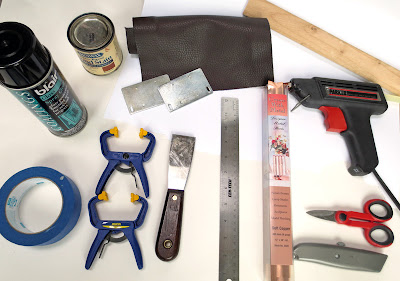
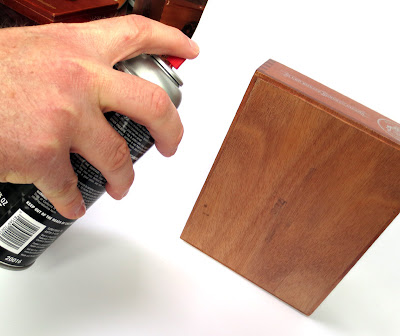
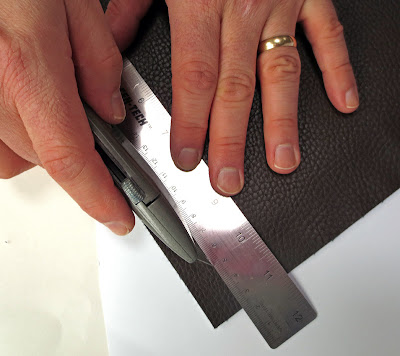
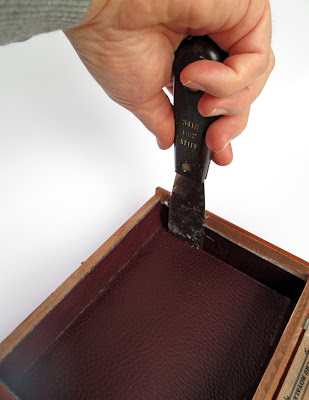

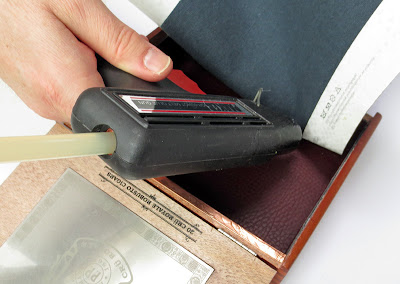
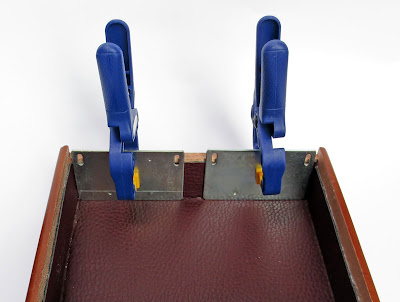
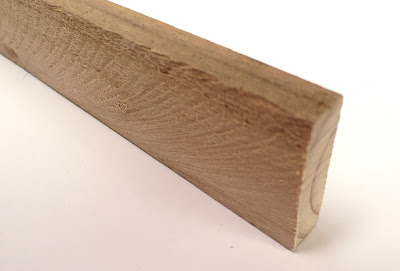
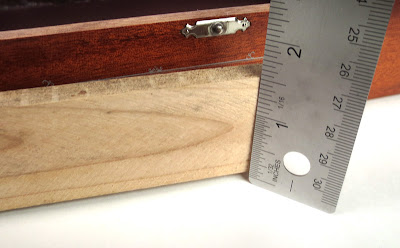
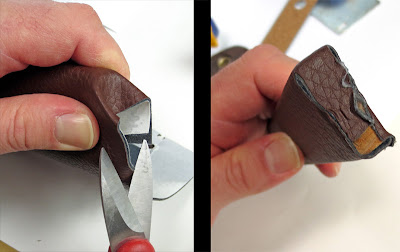
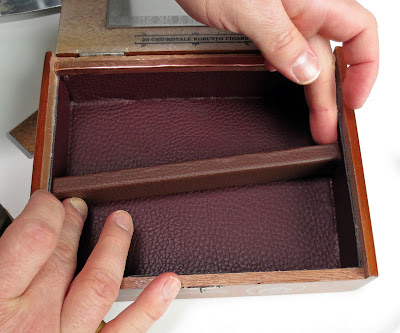
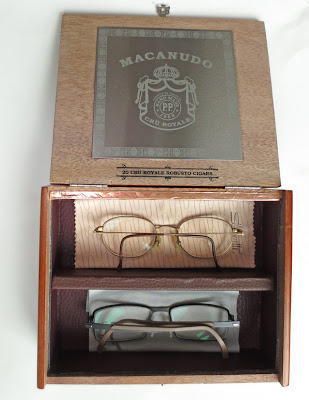
Comments
Post a Comment